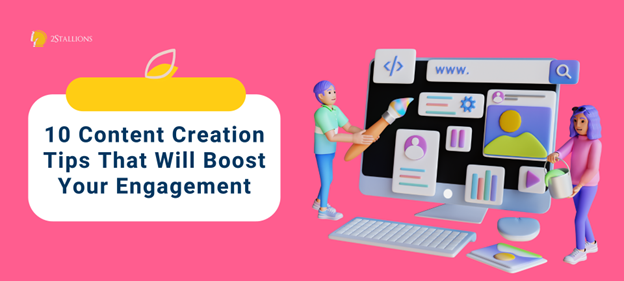SHARE

In today’s digital age, understanding your target audience is vital to the success of your marketing efforts.
One effective tool that can help you gain this understanding is the creation of buyer personas.
By developing detailed and accurate buyer personas, you can tailor your digital marketing strategies to suit your target audience’s needs and preferences.
In this article, we will delve into the importance of buyer personas in digital marketing and provide steps to create and utilise them for optimum success.
 Understanding The Importance of Buyer Personas In Digital Marketing
Understanding The Importance of Buyer Personas In Digital Marketing
Before we dive into creating buyer personas, let’s first explore why they are crucial for your digital marketing success.
Buyer personas are fictional representations of your ideal customers based on actual data and market research.
They provide deep insights into your target audience’s motivations, desires, and pain points.
By understanding your customers personally, you can design and implement marketing strategies that resonate with them on a deeper level.
When it comes to digital marketing, the landscape is constantly evolving. With the rise of social media, mobile devices, and other technological advancements, businesses must adapt their strategies to stay ahead of the competition.
This is where buyer personas come into play. They act as a compass, guiding you through the ever-changing digital landscape and helping you make informed decisions.
One of the critical benefits of buyer personas is that they go beyond traditional demographic data, such as age and gender.
While these factors are essential, they only scratch the surface of understanding your audience.
Buyer personas delve into the psychographics of your customers, analysing their attitudes, aspirations, values, and interests.
This deeper level of understanding allows you to tailor your marketing messages and content to resonate with your audience more personally.
Ready to level up your brand online? Our digital marketing agency is built to deliver real growth.
Defining Buyer Personas: What Are They?
Buyer personas are more than just demographic information about your target audience.
They go beyond traditional demographic data, such as age and gender, and delve into the psychographics of your customers.
Psychographics involves analysing your audience’s attitudes, aspirations, values, and interests, helping you understand their preferences and behaviour patterns.
Let’s take an example to illustrate the concept of buyer personas. Imagine you are a digital marketing agency specialising in helping small businesses increase their online presence.
One of your buyer personas could be “Samantha,” a 35-year-old entrepreneur who runs a boutique coffee shop.
By understanding Samantha’s motivations and pain points, you can tailor your marketing strategies to address her needs.
For example, you could create content highlighting the benefits of digital marketing for small businesses and offering practical tips for improving online visibility.
Creating buyer personas involves a combination of research and creativity.
You need to gather data about your target audience through surveys, interviews, and market research.
This data will help you uncover common customer characteristics, preferences, and challenges.
Once you have collected the necessary information, you can create detailed buyer persona profiles.
The Role Of Buyer Personas In Shaping Marketing Strategies
Buyer personas play a crucial role in shaping your marketing strategies.
By understanding the needs and wants of your audience, you can create customised messaging, relevant content, and personalised experiences that resonate with them.
In turn, this leads to higher levels of engagement, increased brand loyalty, and, ultimately, higher conversion rates.
Let’s continue with the example of Samantha, the coffee shop owner. By knowing that Samantha values sustainability and community engagement, you can create ethical digital marketing campaigns that align with these values.
You could partner with local suppliers who prioritise ethical sourcing and promote your coffee shop as a hub for community events and gatherings.
This targeted approach attracts Samantha and builds a loyal customer base that shares her values.
Moreover, buyer personas help you prioritise your marketing efforts. Instead of appealing to a broad audience, you can focus on your buyer personas’ specific needs and preferences.
This allows you to allocate your resources more effectively and achieve better results.
For example, suppose one of your buyer personas is a tech-savvy millennial.
In that case, you might invest more in social media advertising and influencer partnerships.
In contrast, for another persona who values traditional media, you might focus on print advertisements and local events.
In conclusion, buyer personas are an essential tool in digital marketing. They provide valuable insights into your target audience, allowing you to create tailored strategies that resonate with your customers personally.
By understanding your audience’s motivations, desires, and pain points, you can deliver relevant content and experiences that drive engagement and ultimately lead to higher conversion rates.
So, take the time to develop your buyer personas and watch your digital marketing efforts flourish.
 Steps To Create Effective Buyer Personas
Steps To Create Effective Buyer Personas
Identifying Your Target Audience
The first step in creating buyer personas is to identify your target audience. Analyse your existing customer base and look for common characteristics and patterns.
You can also conduct market research to gather insights into the broader target audience that you want to reach.
By understanding your audience’s demographics, psychographics, and previous buying behaviours, you can establish a solid foundation for creating accurate buyer personas.
When analysing your existing customer base, delving deep into their preferences and behaviours is essential.
Look for recurring trends and patterns to help you understand their motivations and decision-making processes.
You can create buyer personas that accurately represent your target audience by identifying these commonalities.
Market research plays a crucial role in understanding the broader target audience. It involves gathering data from various sources such as surveys, focus groups, and online analytics.
This data can provide valuable insights into your potential customers’ preferences, needs, and pain points.
By combining this information with your existing customer data, you can create comprehensive buyer personas that capture the essence of your target audience.
Gathering Detailed Information About Your Audience
Once you have identified your target audience, it’s time to gather detailed information about them.
This can be done through various methods such as surveys, interviews, and social media listening.
Asking questions about their goals, challenges, preferences, and purchase decision-making process can provide valuable insights into their motivations and pain points.
The more data you collect, the more accurate and comprehensive your personas will be.
Surveys are an effective way to gather quantitative data about your audience. You can collect information about their demographics, interests, and preferences by designing well-crafted questionnaires.
This data can help you understand the different segments within your target audience and tailor your marketing strategies accordingly.
Interviews, on the other hand, allow you to have in-depth conversations with your customers.
You can better understand their needs, desires, and challenges by asking open-ended questions and actively listening to their responses.
These insights can be invaluable when creating buyer personas as they provide a more nuanced view of your audience.
Social media listening involves monitoring and analysing conversations happening on social media platforms.
By observing what your target audience says about your industry, products, or competitors, you can gain insights into their preferences and pain points.
This information can help you refine your buyer personas and create messaging that resonates with your audience.
Segmenting Your Audience into Different Personas
After gathering information about your audience, it’s time to segment them into different personas.
Look for commonalities and patterns among your collected data and create distinct personas based on these similarities.
Each persona should represent a specific segment of your target audience with unique characteristics, needs, and preferences.
By segmenting your audience, you can develop personalised strategies for each persona, maximising the effectiveness of your marketing efforts.
Segmentation allows you to create targeted messaging that speaks directly to the needs and preferences of each persona.
You can increase engagement and conversion rates by tailoring your marketing strategies to specific segments.
For example, if one of your personas consists of budget-conscious individuals, you can highlight the cost-effectiveness of your products or services in your marketing materials.
When segmenting your audience, it’s important to consider demographic and psychographic factors.
Demographic factors include age, gender, location, and income, while psychographic factors include values, interests, and lifestyle.
By combining these factors, you can create personas that capture the essence of your target audience and guide your marketing efforts effectively.
 Utilising Buyer Personas in Digital Marketing
Utilising Buyer Personas in Digital Marketing
Tailoring Your Content to Suit Different Personas
One of the key benefits of creating buyer personas is that it allows you to tailor your content to suit each persona’s specific needs and preferences.
By understanding their pain points, interests, and preferred communication channels, you can deliver targeted content that speaks directly to each persona.
This personalised approach creates a deeper connection with your audience, increasing engagement and driving conversions.
Let’s look at how to tailor your content for different buyer personas effectively.
Imagine you have two personas for your digital marketing campaign: Sarah, a young professional looking for trendy fashion items, and John, a middle-aged businessman searching for high-quality office supplies.
For Sarah, you can create content that showcases the latest fashion trends, offers styling tips, and highlights the convenience of online shopping.
By understanding her interests and pain points, you can craft engaging blog posts, social media updates, and email newsletters that resonate with her.
Additionally, you can use visually appealing images and videos to capture her attention and inspire her to purchase.
On the other hand, for John, you can focus on providing detailed product descriptions, customer testimonials, and case studies demonstrating your office supplies’ reliability and durability.
By understanding his preferences for comprehensive information, you can optimise your website and social media platforms to provide easy access to downloadable resources, such as product catalogues and user guides.
Personalising Your Marketing Messages
In addition to content, buyer personas allow you to personalise your marketing messages.
By crafting messages that resonate with each persona’s values, aspirations, and challenges, you can elicit an emotional response and make your marketing efforts more persuasive.
Personalisation helps build trust and loyalty, as your audience feels understood and valued.
Let’s continue with the example of Sarah and John. For Sarah, you can create marketing messages that emphasise the importance of self-expression through fashion and highlight how your brand aligns with her values of sustainability and inclusivity.
By addressing her aspirations to stay on-trend and make a positive impact, you can establish an emotional connection that motivates her to choose your brand over competitors.
For John, you can focus on marketing messages that emphasise the importance of professionalism, efficiency, and cost-effectiveness.
By addressing his challenges in finding reliable office supplies that meet his high standards, you can position your brand as a trusted partner that understands his needs.
Highlighting testimonials from satisfied customers who have experienced increased productivity and cost savings can further strengthen your message.
Optimising Your Digital Platforms For Different Personas
Another way to utilise buyer personas in digital marketing is by optimising your digital platforms to suit each persona’s preferences.
For example, if one persona prefers visual content, you can prioritise image and video-based content on your website and social media platforms.
If another persona prefers detailed information, you can provide comprehensive product descriptions and downloadable resources.
By catering to the specific needs of each persona, you create a seamless and engaging user experience, increasing the chances of conversion.
Let’s explore how you can optimise your digital platforms for Sarah and John.
For Sarah, you can create a visually appealing website with vibrant images, fashion lookbooks, and videos showcasing your products in action.
You can also leverage social media platforms like Instagram and Pinterest to share visually inspiring content and engage with her through comments and direct messages.
For John, you can focus on providing a user-friendly website with straightforward navigation and detailed product information.
You can also offer downloadable resources such as product specifications, case studies, and whitepapers to cater to his preference for in-depth information.
Additionally, you can provide a live chat feature or a dedicated customer support email to address any specific queries or concerns he may have.
By optimising your digital platforms to suit each persona’s preferences, you create a personalised and seamless user experience that enhances engagement and increases the likelihood of conversion.
 Measuring The Success of Your Buyer Personas
Measuring The Success of Your Buyer Personas
Tracking Engagement Levels of Different Personas
Once you have implemented your buyer personas in your digital marketing strategies, tracking their effectiveness is essential.
Monitor the engagement levels of different personas by analysing metrics such as website traffic, social media interactions, and email open rates.
By analysing these metrics, you can identify which personas are most responsive to your marketing efforts and make adjustments accordingly.
Analysing The Conversion Rates of Different Personas
Conversion rates are a key indicator of the success of your buyer personas.
Analyse the conversion rates of different personas to understand which personas drive the most sales or leads.
By identifying the personas generating the highest returns on investment, you can allocate your resources strategically and optimise your marketing strategies for maximum impact.
Adjusting Your Personas Based on Performance Metrics
Once you have gathered sufficient data on the performance of your buyer personas, it’s important to adjust them based on the insights gained.
As market trends and customer preferences evolve, your personas may need to be updated to ensure their accuracy and relevance.
Regularly reviewing and refining your buyer personas will ensure that your digital marketing efforts remain effective and aligned with your audience’s needs.
In conclusion, creating buyer personas is fundamental to digital marketing success.
Understanding your audience deeper and tailoring your strategies to their specific needs and preferences can significantly enhance your brand’s visibility, engagement, and conversion rates.
Take the time to gather accurate data, segment your audience, and personalise your content and messaging.
Continuously measure and adjust your personas to ensure their ongoing effectiveness.
Doing so will lay the foundation for a successful digital marketing campaign that resonates with your target audience.
Frequently Asked Questions About Buyer Personas
”How
Identifying a buyer persona involves research, surveys, and interviews with your target audience. This includes a mix of customers, prospects, and those outside your contacts who fit the targeted demographic. It’s about understanding their demographics, behaviour patterns, motivations, and goals.
”What
A buyer persona is a semi-fictional representation of your ideal customer based on market research and actual data about your existing customers. It provides detailed insights about customer needs, concerns, and preferences, helping businesses tailor their product development and marketing strategies.
”What
While the number and types of buyer personas can vary based on the industry and company, a general classification includes:
- Economic Buyers: Those who focus on the financial aspects of a purchase.
- Technical Buyers: Individuals concerned with a product or service’s technical facets and specifications.
- User Buyers: The actual users of a product or service, focused on usability and efficiency.
- Coach Buyers: Those who guide or influence the decision-making process but might not be the final decision-makers.
”What
A ‘buyer persona’ focuses on individuals or entities and their motivations, concerns, and decision-making patterns during the purchasing process. A ‘customer persona’, while similar, tends to lean more towards understanding the user post-purchase, focusing on their habits, preferences, and challenges related to the product or service usage.
”What
An ideal buyer persona represents the perfect customer for your product or service. This persona represents someone who finds the maximum value in what you offer and provides maximum value back to the business, whether through consistent purchases, brand advocacy, or other beneficial actions.



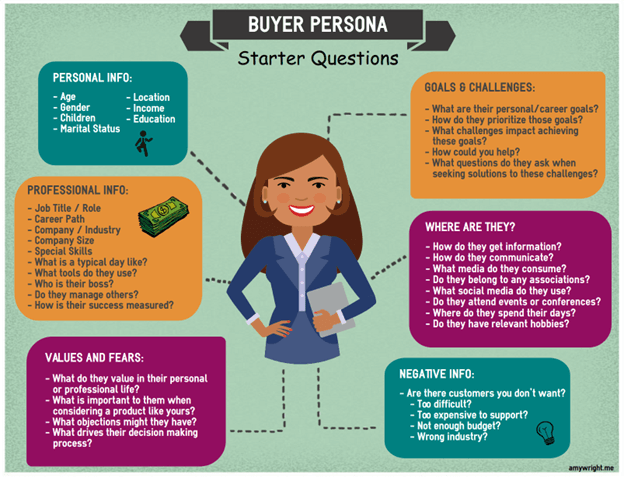 Understanding The Importance of Buyer Personas In Digital Marketing
Understanding The Importance of Buyer Personas In Digital Marketing
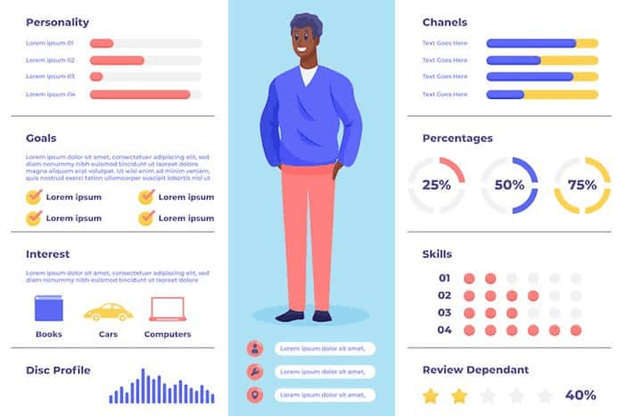 Steps To Create Effective Buyer Personas
Steps To Create Effective Buyer Personas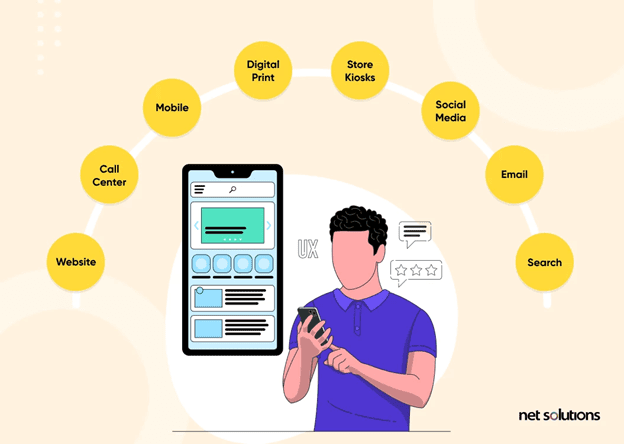 Utilising Buyer Personas in Digital Marketing
Utilising Buyer Personas in Digital Marketing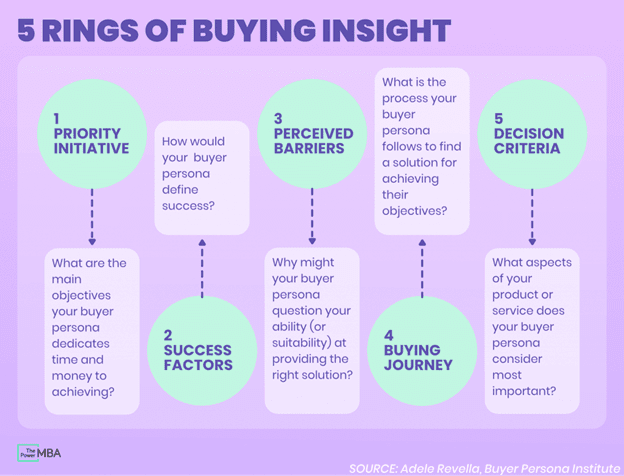 Measuring The Success of Your Buyer Personas
Measuring The Success of Your Buyer Personas